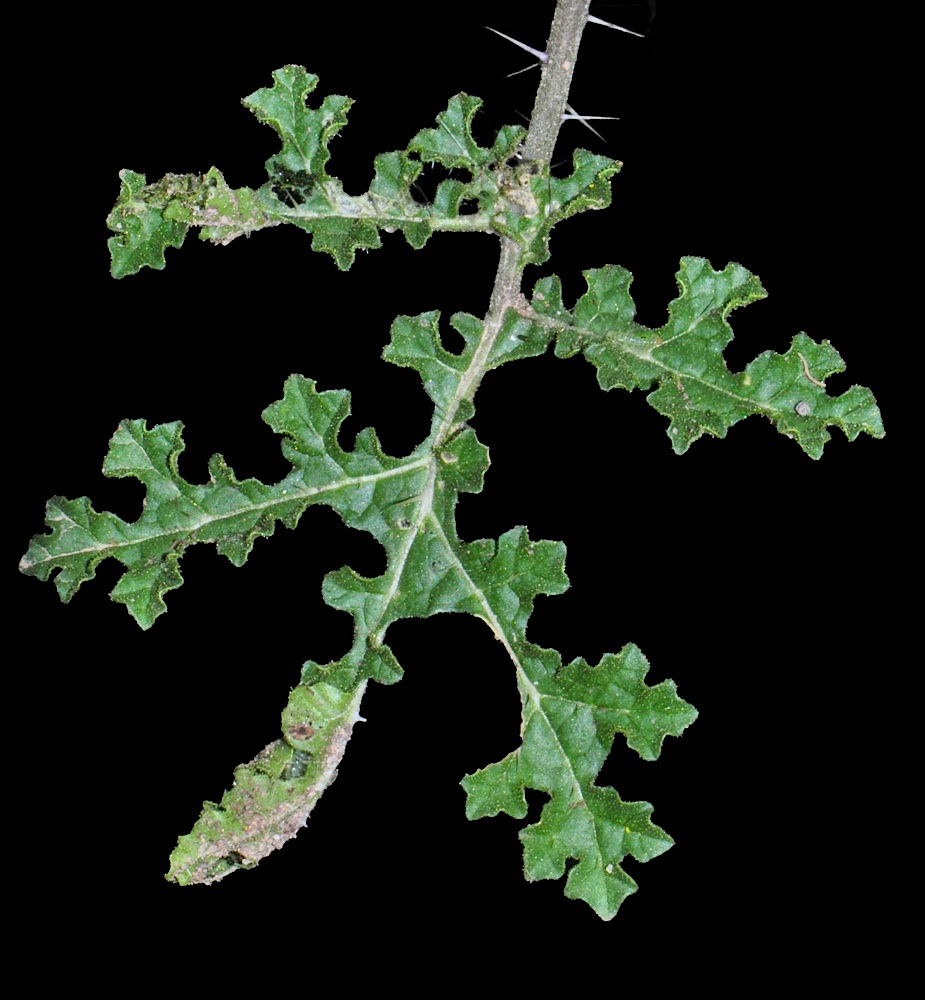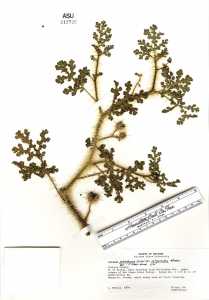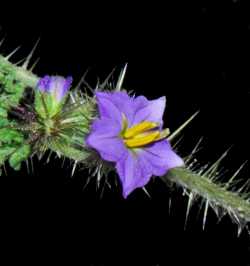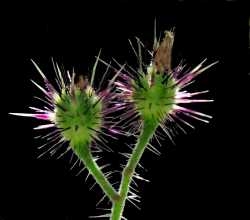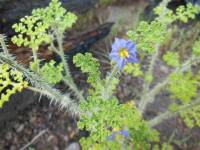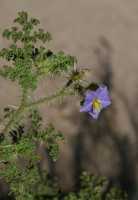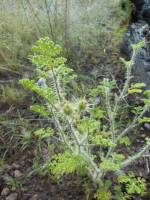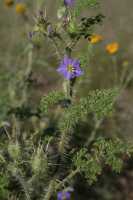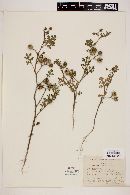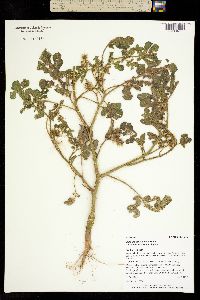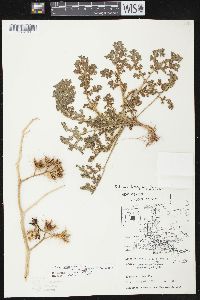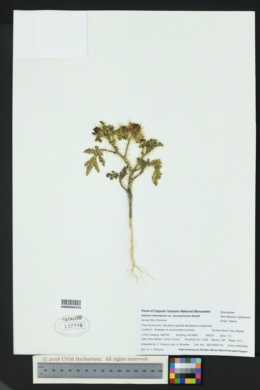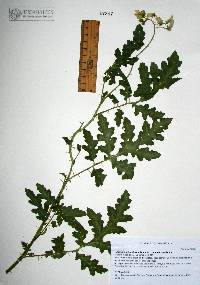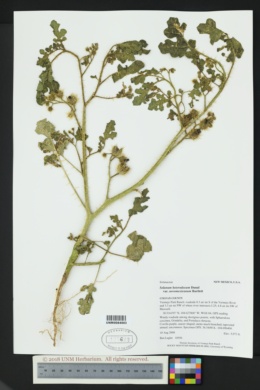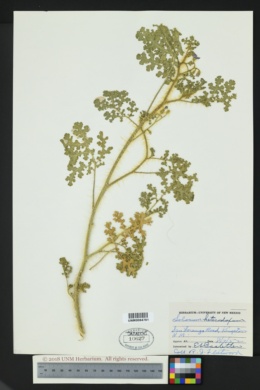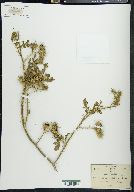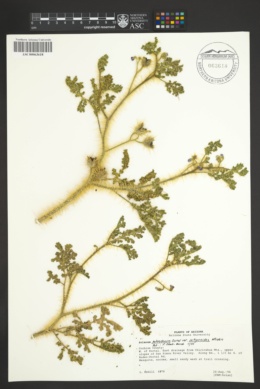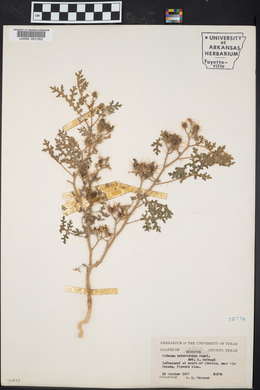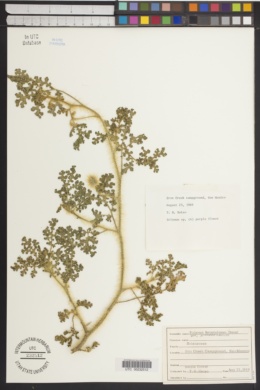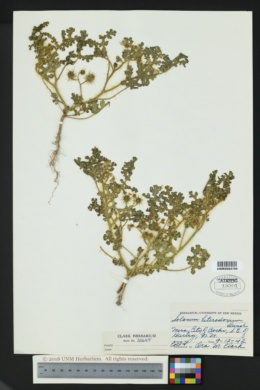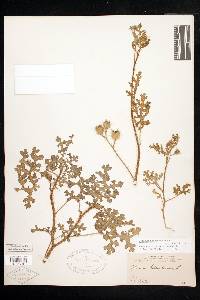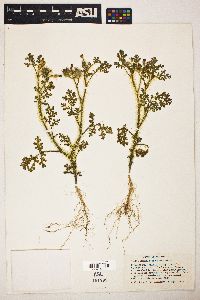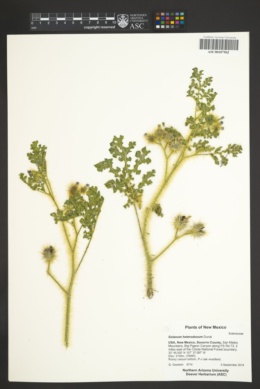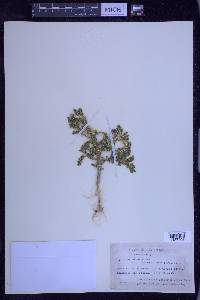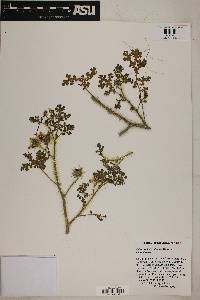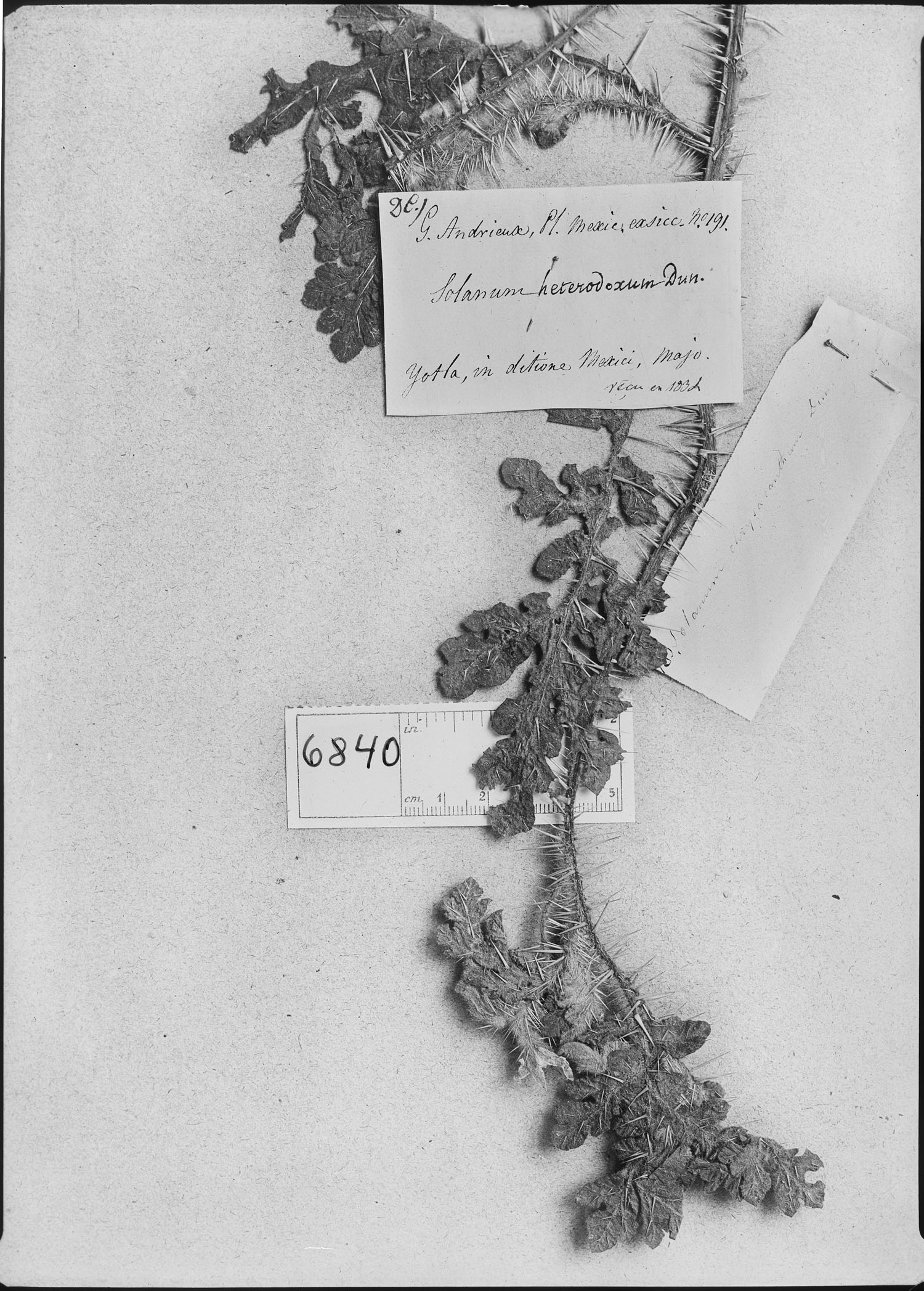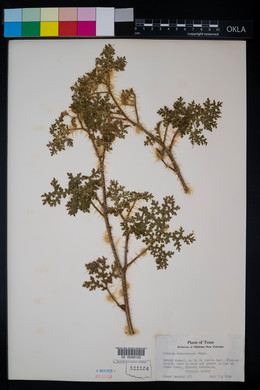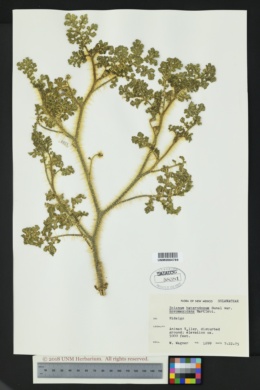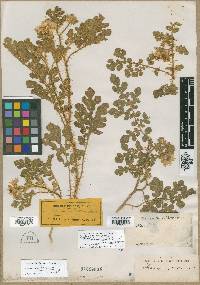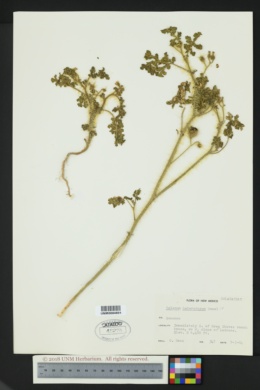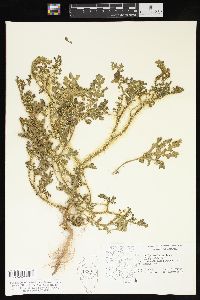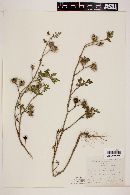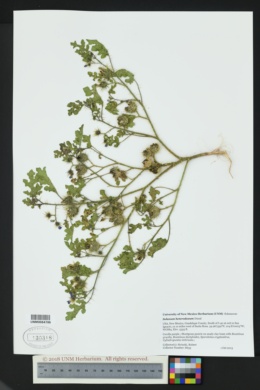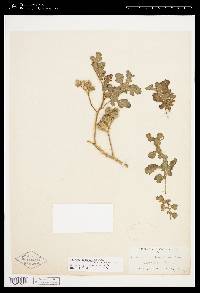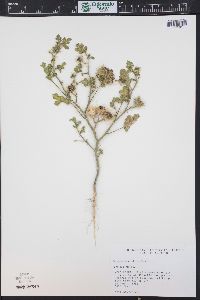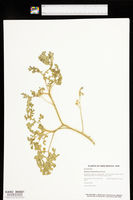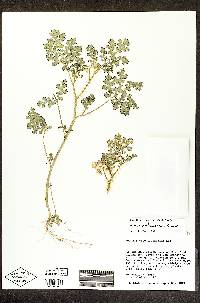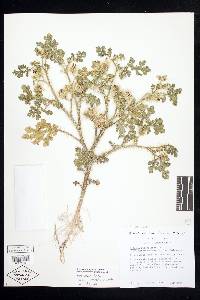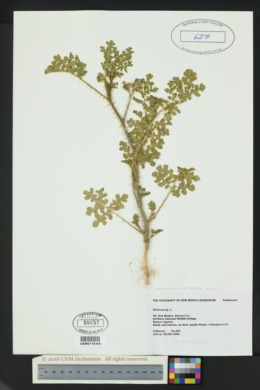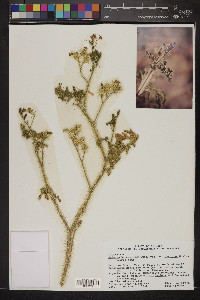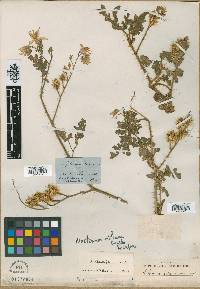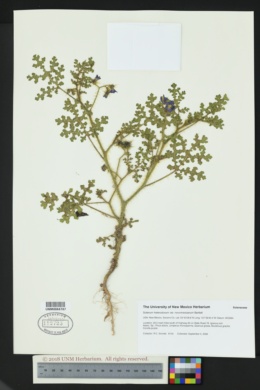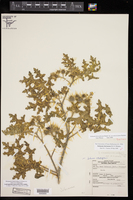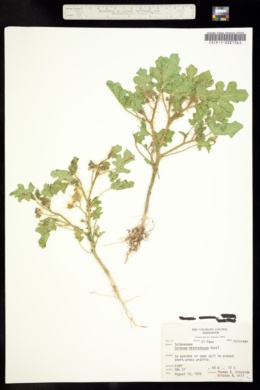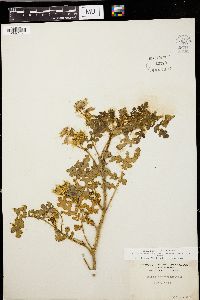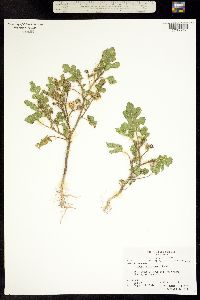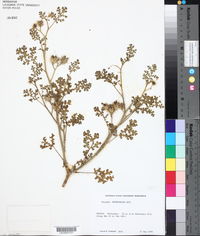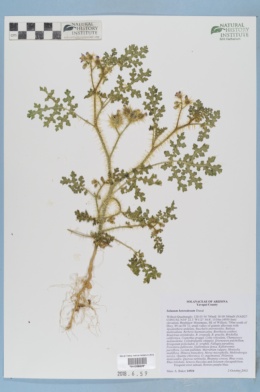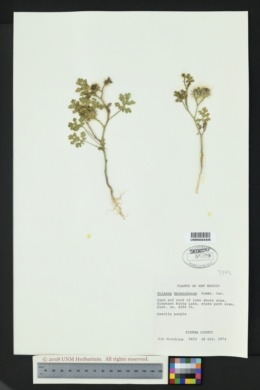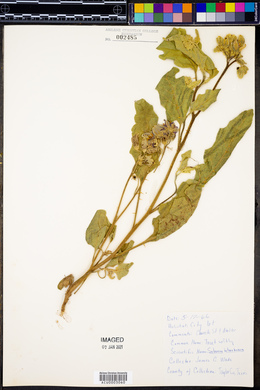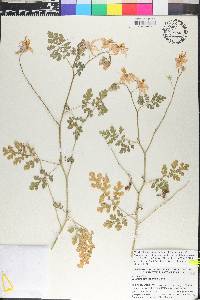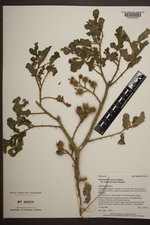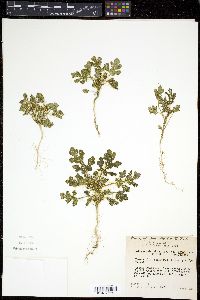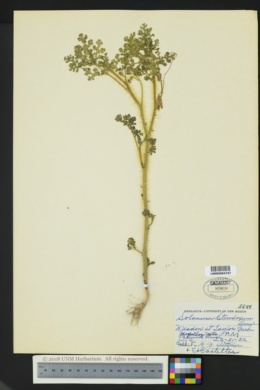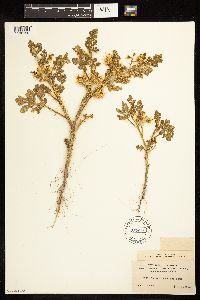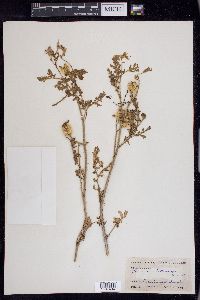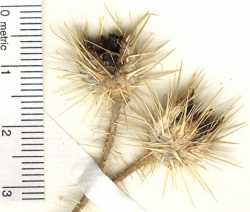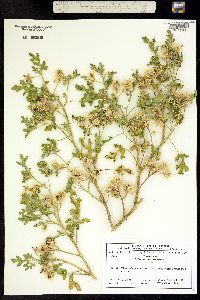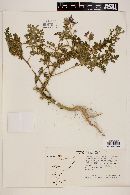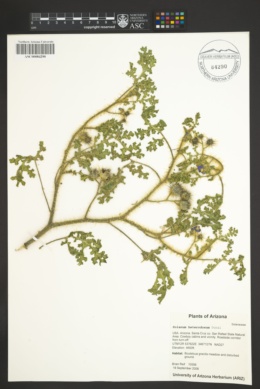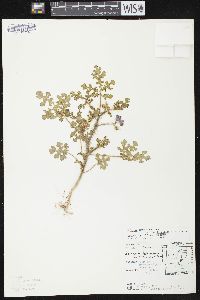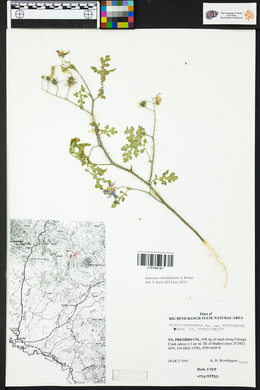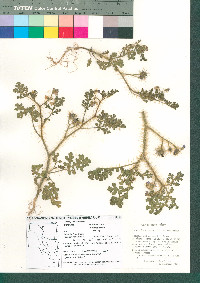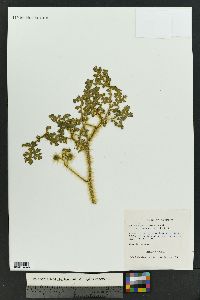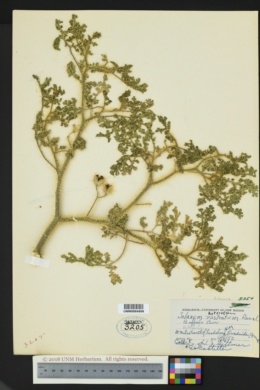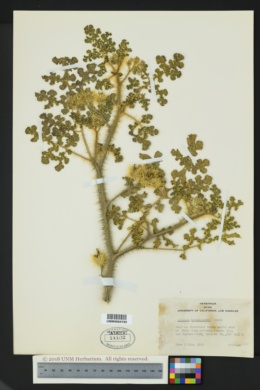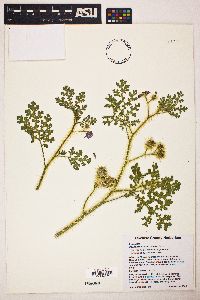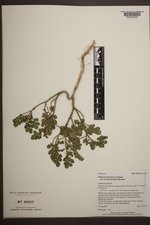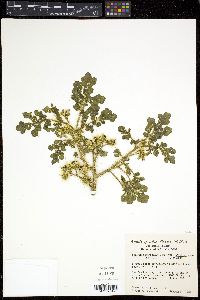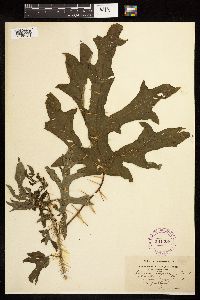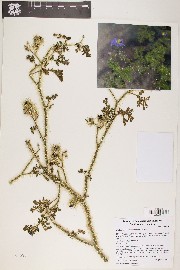Solanum heterodoxum
|
|
|
|
Family: Solanaceae
melonleaf nightshade, more...melon-leaf nightshade
[Nycterium violaceum Engelm. ex Walp., moreSolanum chrysacanthum Dunal] |
PLANT: Annual herbs, taprooted, without tubers or stolons, 30-70 cm tall, pubescent, densely armed with prickles 2-9 mm long; hairs 0.2-0.8 mm long, simple over most of the plant, frequently gland-tipped. LEAVES: alternate, deeply dissected, bipinnatifid to compound, broadly ovate to obovate or deltoid, 4-11 cm long, with irregular-stellate trichomes on the lower surface, and simple, gland-tipped trichomes on the upper and lower surface, the stellate trichomes with 2-5 rays, the main veins armed with scattered prickles; petioles 2-7 cm long, armed with prickles; base of leaf or leaflets variable, acute to cordate; apices of ultimate lobes rounded to obtuse. INFLORESCENCE: 4-10 cm long, raceme-like monochasial cymes, 5-9-flowered; peduncles 1-5 cm long. FLOWERS: somewhat zygomorphic, perfect or having nonfunctional stigmas and abortive ovules in the terminal portions of the inflorescence; pedicel 0.5-2 cm long; calyx campanulate, the tube 1.5-2.2 mm long, the lobes deltoid, 2-5 mm long; corollas stellate-pentagonal, 1-1.7 cm wide, loosely folded between the lobes, violet to blue; stamens unequal; anthers oblong, of two sizes, the lowermost extended anther 3.5-5 mm long, purple-tinged, incurved at the tip, the upper shorter anthers 2-4 mm long and yellow; filaments ca. 1/5 as long as the anthers; styles slender, extending out beyond the anthers; stigmas 0.3-0.6 mm across. FRUITS: spherical, 0.9-1.2 cm in diam., tightly invested by the densely armed, burr-like accresent tube of the calyx; seeds dark brown, 2.5-2.9 mm long, lenticular to broadly ovate, minutely pitted. NOTES: Silty, sandy, or gravelly soils of dunes, streambeds, washes, and open hillsides: Cochise, Graham, Maricopa, Santa Cruz, Yavapai cos. (Fig. 1F); 590-1650 m (1950-5400 ft).; Jun-Oct; NM; n and c Mex. Whalen (1979) cites three varieties of S. heterodoxum as occurring in the United States and Mexico. S. h. var. setigeroides, with stems densely covered in needle-like prickles and pentagonal corollas with broadly deltoid lobes, is probably the only variety in AZ. REFERENCES: Chiang, F. and L.R. Landrum. Vascular Plants of Arizona: Solanaceae Part Three: Lycium. CANOTIA 5 (1): 17-26, 2009. VPAP (Bates et al. 2009), Kearney and Peebles 1969, McDougall 1973, Allred and Ivey 2012 Duration: Annual Nativity: Native Lifeform: Forb/Herb General: Annual herb, to 70 cm tall, from taproots without tubers or stolons; stems erect, branching; herbage pubescent with gland-tipped hairs and densely armed with straw-colored prickles, 2-9 mm long. Leaves: Alternate along the stems, on prickle-covered petioles, 2-7 cm long; blades 4-11 cm long, deeply dissected and bipinnatifid, with rounded lobes; upper leaf surface covered with gland-tipped hairs, and lower surface covered with irregular-stellate hairs; veins armed with scattered prickles. Flowers: Showy and purple, in few-flowered clusters at branch tips, on prickly pedicels to 2 cm long; calyx densely prickly, bell-shaped and 5-lobed, 2-3 cm long, the lobes triangular and much shorter than the tube portion of the calyx; corolla 1-2 cm diameter, pentagonal and loosely folded between the lobes, violet to blue; stamens bright yellow except for the longest stamen which has a purple-tinged anther. Fruits: Berries spherical, roughly 1 cm in diameter, closely wrapped by the persistent calyx, which is densely armed with prickles; seeds lens-shaped, 3 mm long, dark brown. Ecology: Found on silty, sandy, or gravelly soils of dunes, stream beds, washes, and open hillsides, from 2,000-6,000 ft (610-1829 m); flowers June-October. Distribution: CO to TX, NM, and AZ; south to c MEX Notes: This annual Solanum is distinguished by being covered with fine, straw-colored prickles and, less obviously, some gland-tipped hairs; the deeply bipinnately divided leaves with rounded lobes; deep purple flowers which have the same morphology as flowers from garden tomato plants; and fruits that appear densely armed with prickles because the prickly calyx expands to wrap around the berries at maturity. There are 2 varieties in the southwest: var. setigeroides is very densely covered in fine prickles, with more than 30 prickles per square centimeter; this is the only variety found in Arizona, and it occurs in New Mexico as well. Var. novomexicanum has slightly larger prickles which cover the stems less densely, usually with no more than 20 prickles per square centimeter. S. rostratum appears similar but has yellow flowers. Ethnobotany: Unknown Etymology: Solanum is from the Latin solor, to comfort or relieve, and -anum, pertaining to, a reference to the narcotic properties of some species; heterodoxum means non-conforming, from the Greek hetero, other, and doxos, belief or opinion. Synonyms: Androcera heterodoxa, Nycterium heterodoxum Editor: LCrumbacher 2011, FSCoburn 2015 |
|
|
|

